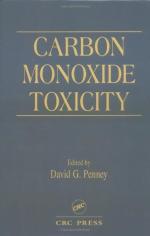|
This section contains 770 words (approx. 3 pages at 300 words per page) |

|
Carbon monoxide, an odorless, poisonous gas, can be generated by gas furnaces and water heaters, ranges, space heaters, or wood stoves if they are malfunctioning or not vented properly. Cars, portable generators, and gas-powered gardening equipment also generate carbon monoxide (CO) and can cause problems if they are operated in enclosed areas or attached garages. Once inhaled, carbon monoxide inhibits the blood's ability to carry oxygen by replacing oxygen in the red blood cells which prevents the oxygen supply from reaching the organs in the body. This oxygen deprivation can cause varying amounts of damage depending on the level of exposure. Low level exposure can cause flu-like symptoms including shortness of breath, mild headaches, fatigue, and nausea. Higher level exposure may cause dizziness, mental confusion, severe headaches, nausea, and fainting. Prolonged high level exposure can cause death. According to the U.S. Consumer Product Safety Commission...
|
This section contains 770 words (approx. 3 pages at 300 words per page) |

|


